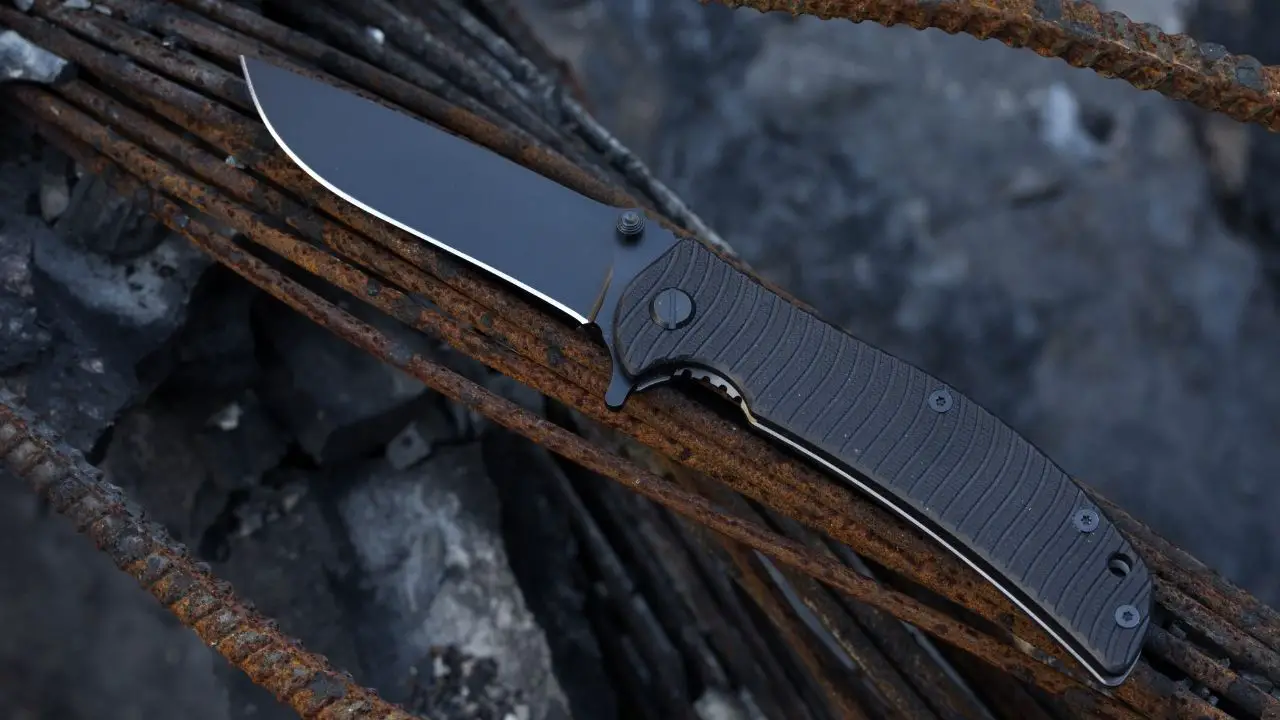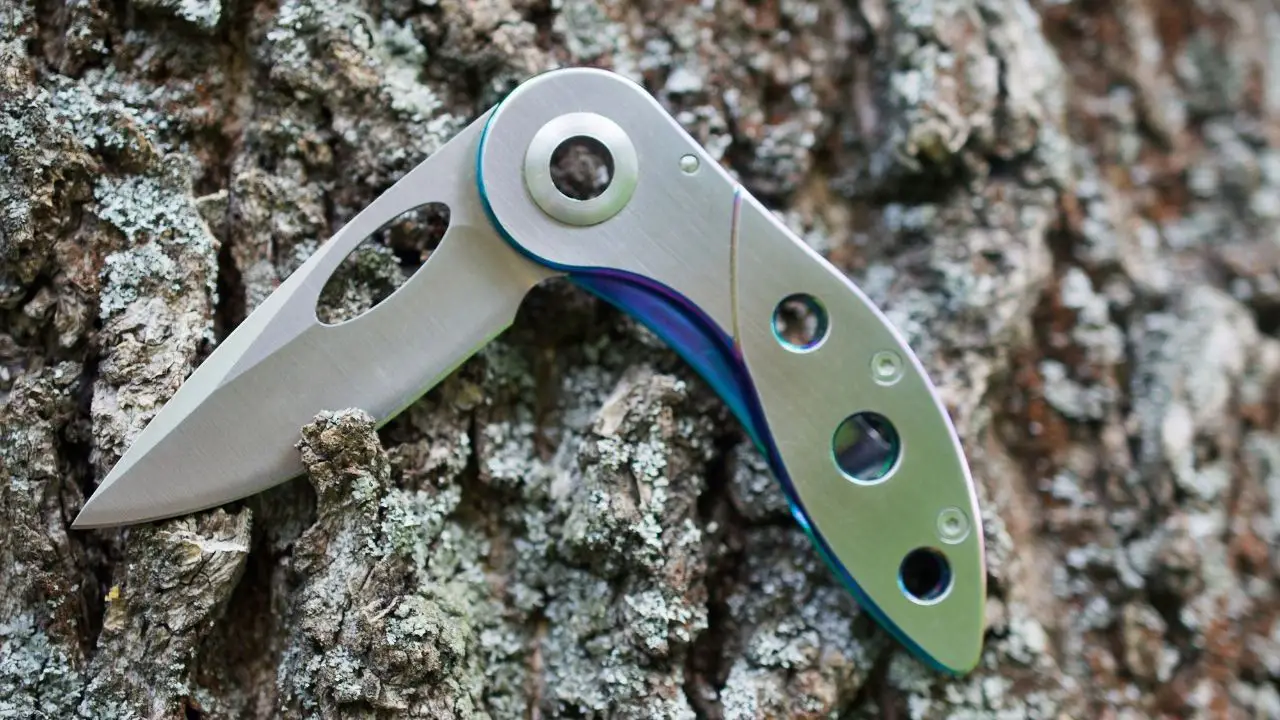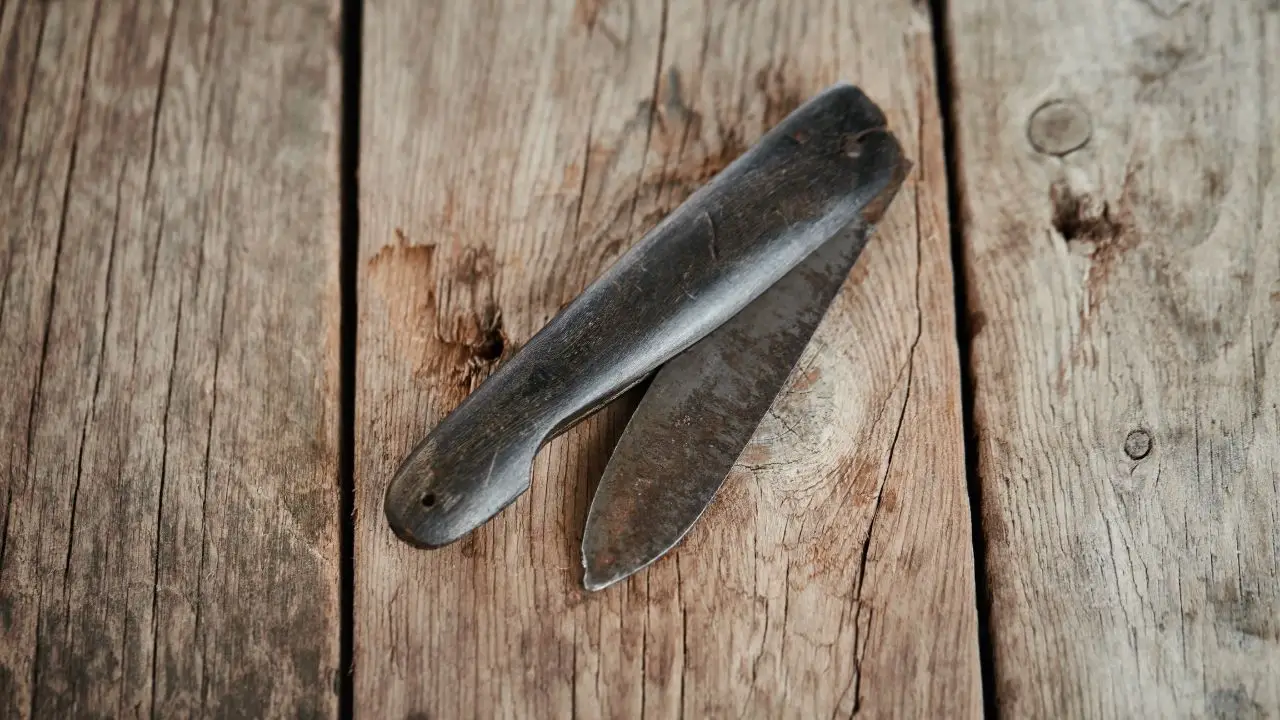Rust is one of the most destructive things that can happen to a pocket knife, so it’s essential to take the right steps in order to prevent it from forming and potentially ruining your knife. There are many different methods to prevent rust on a knife with varying degrees of success, so today, we’re going to look at the best ways to keep your pocket knife from rusting.
You can prevent your pocket knife from rusting by keeping it clean, extremely dry, and by storing it in a cool, dry place. Rust begins to form when oxygen and moisture are present, so removing any water when it gets wet and regularly oiling your blade is the best way to keep it rust-free.
For rust to form, various processes and chemical reactions have to occur in the right conditions. While the ideal conditions for rust are quite common, disrupting the perfect conditions for rust formation is all you have to do to prevent your knife from rusting.
There are many tactics and preventative measures that you can take to ensure your pocket knife doesn’t rust. Let’s quit wasting time and get right into the practical steps you can take to keep your pocket knife from rusting!
Table of Contents
Best Tactics for Keeping Your Pocket Knife From Rusting

No rust prevention tactics, tricks, or remedies will work 100% of the time, but you can try your best to prevent rust with a pretty solid success rate if you take the right steps and stay vigilant.
The principles to keep your pocket knife rust-free are pretty simple, but the secret is to consistently and regularly take the necessary precautions. If you let the care and maintenance of your knife slip for only a few weeks, rust can cause irreversible damage to your blade.
If you’re reading this and have never had a knife before, it can seem daunting and like a lot of work. However, if you just put a little bit of time and effort into taking the right precautions and caring for your knife, there’s a good chance you’ll keep your blade rust-free and functional for a long time.
Keeping a pocket knife free of rust isn’t a monumental task; it’s many small precautions and duties done consistently. For information on why knives rust, check out this article .
.
Keep Your Pocket Knife Extremely Dry
If you had to do only a single thing to prevent your knife from rusting, keeping your knife dry would be at the top of the list.
The importance of keeping your pocket knife dry is always quite high, but it fluctuates slightly depending on your knife’s blade steel. Some knife steels are incredibly resistant to moisture and won’t rust quickly, while others will rust at an alarming rate.
Carbon steel rusts much faster than stainless steel when exposed to moisture.
How well you do at keeping your pocket knife dry will dictate how successful you are at keeping your knife rust-free. If you fail and let your knife wet for a significant portion of time, rust will most likely overrun your blade and cause a lot of damage.
The best thing you can do is dry off your knife whenever you get the chance or think about it. Just finished using your knife? Dry it. Just took your knife out of your bag to put it away? Dry it. Showing your friend your new knife that you shouldn’t have bought? Dry it.
You get the point: keep your pocket knife dry!
Keeping your knife dry doesn’t have to take very long either. Whenever you finish using your knife, just wipe it off with a dry towel or the bottom of your shirt.
Even if you’re nowhere near water, drying your knife is still a good idea because almost all wood (especially when it’s still green) and other materials contain moisture that can cause your blade to rust if left unattended. Make a habit of keeping your knife extremely dry, and the chances of your blade rusting will significantly drop.
Clean Your Pocket Knife Often

After you have finished using your knife, taking a minute to wipe it down to help prevent rust from forming.
Much like keeping your pocket knife dry, whenever you think of it or get the chance, quickly clean your knife. The cleaner your knife, the less moisture is likely going to settle on the blade and cause it to rust.
There are two main ways that you can quickly clean your pocket knife while on the go: there’s a dry method, and then there’s a wet method.
If you have a little bit of time to spare, the wet method usually gets you knife cleaner, but the dry method of cleaning your knife works in a pinch and is MUCH better than doing nothing at all. Below are the two primary ways that I use to clean my pocket knife quickly.
- The Wet Method for Quickly Cleaning Your Pocket Knife: After using your pocket knife, take it to the sink or a creek and run it under the water. Most debris and material will come off, but you may need to use a rag or sponge to get anything stuck to the blade. Once your knife is clean, thoroughly dry it off.
- The Dry Method for Quickly Cleaning Your Pocket Knife: If you are short on time or don’t have access to running water at the moment, you can clean your knife using a cloth or the bottom of your shirt. Most dirt and material will come off your blade after a thorough rubbing, but you can use a small amount of water or “spit shine” your knife if necessary. Once your pocket knife is clean, make sure to dry it carefully.
As you can see, it really doesn’t take much to quickly clean your knife after you use it. It’s all about getting into the habit of doing it and cleaning your knife after nearly every use. Like with drying your knife, the more you clean your blade, the less likely it is to rust.
Store Your Pocket Knife Properly
Now that we’ve gone over how to keep your pocket knife clean and dry once after you’ve used it, it’s time to talk about storing your knife correctly to ensure it doesn’t rust.
Things To Do When Storing a Pocket Knife:
- Store in a cool, dry place (about 68-72 degrees Fahrenheit)
- Make sure the temperature doesn’t fluctuate often
- Lightly wrap your knife if you are afraid it might get scratched
Things to Avoid When Storing a Pocket Knife:
- Avoid having any sort of moisture on or around your knife
- Do not store your knife in its sheath
The best thing you can do for your knife when you’re putting it away or storing it is to place it in a cool, dry place. Most blade rusting will occur when you store your knife, so it is crucially important to do it right and create an environment that doesn’t promote rust.
You should store your pocket knife in an environment that doesn’t change temperatures that much and stays relatively cool or at room temperature (68-72 degrees Fahrenheit). The location you decide to store your knife in should also be extremely dry. Cabinets, shelves, and drawers inside a room that doesn’t change temperatures much are excellent for storing pocket knives to help prevent rust.
(68-72 degrees Fahrenheit). The location you decide to store your knife in should also be extremely dry. Cabinets, shelves, and drawers inside a room that doesn’t change temperatures much are excellent for storing pocket knives to help prevent rust.
Before you put your knife away and store it until the next time you need to use it, make sure it is clean and there is no moisture on or around it. Giving your pocket knife a quick wash (see instructions on how to do this quickly above) and throughout dry before storing is preferable.
You should also avoid storing your knife while it’s in its sheath. Leather sheaths can collect moisture along their insides, and if you leave your knife in its sheath, it can promote the formation of rust.
Do Maintenance Check-Ups on Your Pocket Knife
It is always good to clean and dry your pocket knife after you use it. Doing this will ensure there isn’t any debris, dirt, or grime left on the blade for very long and can help avoid the formation of rust.
Every once in a while (usually about every 2-4 weeks), it is good to take a half-hour to sort of give your pocket knife a spa day and make sure it is in tip-top shape. You should try to schedule maintenance for your knife at regular intervals because it’s super easy to forget.
During these routine maintenance sessions with your pocket knife, here are a few things you should consider checking and doing:
- Check for any signs of rust formation on the blade, pivot mechanism, handle, and other parts of your knife (if you do see dark spots or rust, make sure to check out this article on how to remove rust from a carbon steel blade
 ).
). - Give your knife a thorough cleaning and drying. Take the time to deep-clean your blade more than you usually would after using it for a task.
- Oil your knife’s blade to give it a little extra protection and keep it in good shape. You can use nearly any non-petroleum-based oil, but I prefer vegetable oil because it works great and is easily accessible to most people.
- If your pocket knife is a folder, add lubricant to your knife’s pivot and locking mechanism (Benchmade Blue Lube
 works excellent).
works excellent).
You don’t need to make a huge deal out of regularly maintaining your pocket knife, but it is good to take some time every few weeks to give it a sort of spa day and make sure everything is working correctly.
Tend to Any Rust On Your Pocket Knife Quickly

If you’re cleaning your knife after every use, doing regular maintenance, keeping it extremely dry, and storing it correctly, rust is going to have a pretty hard time forming on your knife blade. For most people, doing those simple steps is more than enough to prevent rust.
However, sometimes no matter how hard you try, rust is exceptionally determined to form on your knife blade. Rust forming on your pocket knife blade can be due to many factors, some inside and outside our control.
Rust can form if you leave your knife in a wet area or don’t clean it for a while. It can also be due to the climate or air humidity, which is mostly outside of our control (a dehumidifier can help sometimes but isn’t always an option).
No matter how it happens, at some point, your knife is likely to rust at least a little.
The key is not to freak out and instead take logical steps to resolve and treat the rust. The faster you treat rust on a knife blade, and the sooner you catch it, the less likely it is to destroy your blade permanently.
If left for long periods of time, rust can seriously corrode a blade and cause severe, sometimes unrepairable, damage. Check out this article on how to remove rust from a carbon steel knife blade for information on cleaning rust from a knife blade.
for information on cleaning rust from a knife blade.
Build Up a Patina On Your Pocket Knife Blade
Another great way to help prevent your knife from rusting is by building up a patina on your blade. A patina is a thin layer of chemical compounds that helps make a blade more durable, healthy, and less susceptible to rust.
is a thin layer of chemical compounds that helps make a blade more durable, healthy, and less susceptible to rust.
There are quite a few ways to get a patina on your pocket knife blade, but it all boils down to two types of categories: forced and natural patinas. As the names suggest, a forced patina is artificially induced while a natural one is formed because of the knife’s natural use.
Let’s look at both types and see which one is best and how to get them to form on your pocket knife to help protect your blade from rust.
Natural Patinas on Pocket Knife Blades:
Depending on your knife steel, a natural patina can take quite some time to form. There isn’t any particular way to create or speed up a natural patina (because it’s supposed to be natural!), so the best thing you can do to promote a natural patina is to use your pocket knife a lot.
You build up a natural patina on your knife because of the chemicals compounds that your blade comes into contact with when you use your knife regularly. The more you use your pocket knife, the faster a natural patina and rust resistance is likely to form.
Forced Patinas on Pocket Knife Blades:
For people who are impatient, don’t use their knives often enough to form a natural patina, or for some other reasons can’t get a natural patina on their blade, a forced patina is another way to build up a buffer between your pocket knife and rust.
There are many processes and theories on how to get a forced patina, but it basically consists of exposing your knife to citric acids to cause the buildup of a patina. There are some risks to forced patinas, so make sure you understand what you’re getting into and know the risks before attempting one.
Why Should You Even Try To Keep Your Pocket Knife Free of Rust?
If you haven’t been around knives before, or you haven’t seen what rust can do to a knife blade, you may be wondering, “why should I even care if my pocket knife gets rusty?”
Well, to put it simply, rust can severely and permanently damage your pocket knife blade.
Not only is rust on a knife a bit of an eyesore, but the implications that it can have on the structural integrity and strength of a blade are significant. If you let rust get too out of hand, it can literally chew through your blade and make it snap into pieces.
Corrosion is a force to be reconded with, and a knife pocket blade is a prime target for rust. It’s essential to ensure your pocket knife blade remains rust-free to ensure it stays strong, functional, and safe to use. Using a rusty knife is also quite dangerous because being cut with a rusty blade can have more severe consequences than if it was clean.
There are a million and one reasons why you should keep your pocket knife blade free of rust, just trust me on that. Taking the time to keep your blade rust-free will save a lot of money, heartache, and frustration down the line.
Final Thoughts
It really doesn’t take a lot of effort to take the necessary steps to stop rust from forming your pocket knife blade. While there is no guarantee that any of these tactics will prevent rust 100% of the time, doing them GREATLY improves your chances.
The best thing you can do for your knife to protect it from rust is to use it, build up a natural patina, clean it often, and keep it dry. It’s as simple as that. It can seem overwhelming at times, but just keeping your pocket knife dry and maintaining it whenever you get the chance will keep your blade in tip-top shape and ward off rust.
Below are a few super popular pocket knives that I’m sure you’d enjoy, make sure to check them out if you’re interested!

